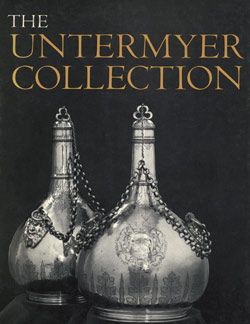Pair of side curtains for a bed
Not on view
This pair of embroidered curtains with chinoiserie designs would have decorated the sides of a European state bed of the late seventeenth to early eighteenth century. Originally, these curtains may have been part of a larger suite of furnishings for the decoration of an entire bedroom–a canape (settee) now in the private rooms of Madame de Maintenon at Fontainebleau has very similar embroidered designs.¹ The complete set of bed hangings probably included matching upper valances for the tester, lower valances for the frame supporting the mattresses, and a coordinating bedcover and headcloth, like the set of French bedroom furnishings now in the Metropolitan Museum (see MMA 53.2.1a-d, .2a-d).
Oversize fanciful flora, a design element familiar from the so-called bizarre silks, are joined in these curtains by human figures dressed in vaguely Chinese garments, imaginary Asian winged dragons, and pairs of long-tailed birds. Early chinoiseriestyle furnishings, made in sturdy tent and cross stitches on canvas, were used over a wide geographic area in northern Europe during the first half of the eighteenth century, and a good number have survived.² The Metropolitan’s side curtains, with their yellow background, are most likely French, as extant examples of the yellow or pale backgrounds are associated with production or use in France. To date, no documentation regarding the commission or production for these various suites of furnishings has been discovered, though we know that another such group was probably ordered from Paris in 1721 for Favorite Palace in Ludwigsburg, Germany, the summer residence of Sybilla Augusta, margravine of Baden-Baden (1675–1733).³
Most of these embroideries, however, were worked on a dark background, either blue or black, and are therefore more closely connected with the aesthetic of English tapestries from the likes of John Vanderbank, with their reference to the dark backgrounds of Asian lacquer screens (see MMA 53.165.2). No design drawings or sources have been identified for these embroideries, which, like the Vanderbank tapestries, are decorative pastiches probably taking inspiration from the same variety of sources employed by contemporary tapestry designers, including imported fabrics and their European counterparts, the bizarre silks.⁴
A feature of Chinese art that confounded and intrigued European observers is very much present in these embroideries. Writers from the late seventeenth and well into the eighteenth century remarked on the asymmetry that was prevalent in Chinese design and architecture, as opposed to the preference for symmetry and pleasing proportion in Western taste.⁵ These early chinoiserie embroideries embody the attempt to capture the beautiful disorder" that Europeans found so irresistible.
[Melinda Watt, adapted from Interwoven Globe, The Worldwide Textile Trade, 1500-1800/ edited by Amelia Peck; New York: Metropolitan Museum of Art; New Haven: distributed by Yale University Press, 2013]
Footnotes
1. See Veron-Denise, "Un mobilier a decor brode de ‘chinoiseries’ au chateau de Fontainebleau," pp. 63–71; this suite, which is not original to the palace, is composed of several slightly different patterns; it was assembled in the nineteenth century from eighteenth-century elements.
2. For example, a set of chairs at Scone Palace, Scotland; wall hangings at Favorite Palace, Ludwigsburg, Germany; and other items in public collections in France, the United Kingdom, and America.
3. Grimm, "Favorite, a Rare Palace Exuding the Spirit of an Age when Chinoiserie Reigned Supreme," p. 83.
4. For a discussion of some of the possible sources, and the essentially decorative nature of these embroideries, probably designed by an unknown "artist ornemaniste,"see Veron-Denise, "Un mobilier a decor brode de ‘chinoiseries’ au chateau de Fontainebleau," p. 60.
5. For the comments of Europeans on the disorder and asymmetry of Chinese art and architecture, see Standen, "Embroideries in the French and Chinese Taste," p. 147, and Mitchell, "The Influence of Tartary and the Indies," p. 30.
Due to rights restrictions, this image cannot be enlarged, viewed at full screen, or downloaded.
This artwork is meant to be viewed from right to left. Scroll left to view more.






